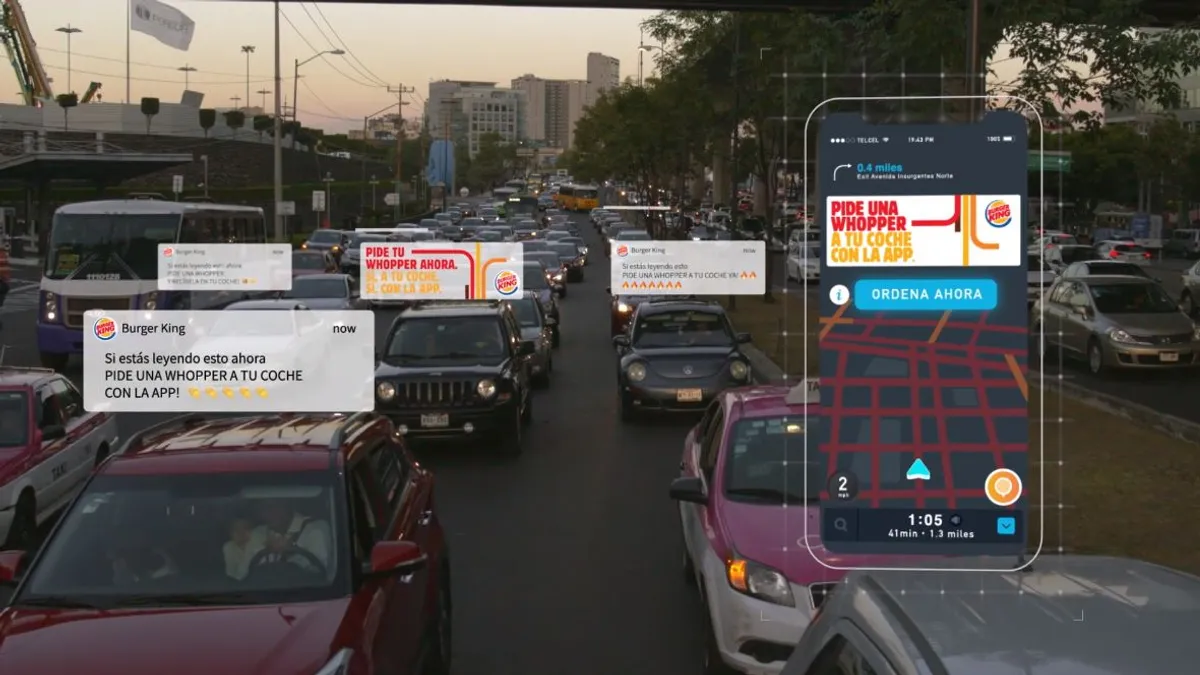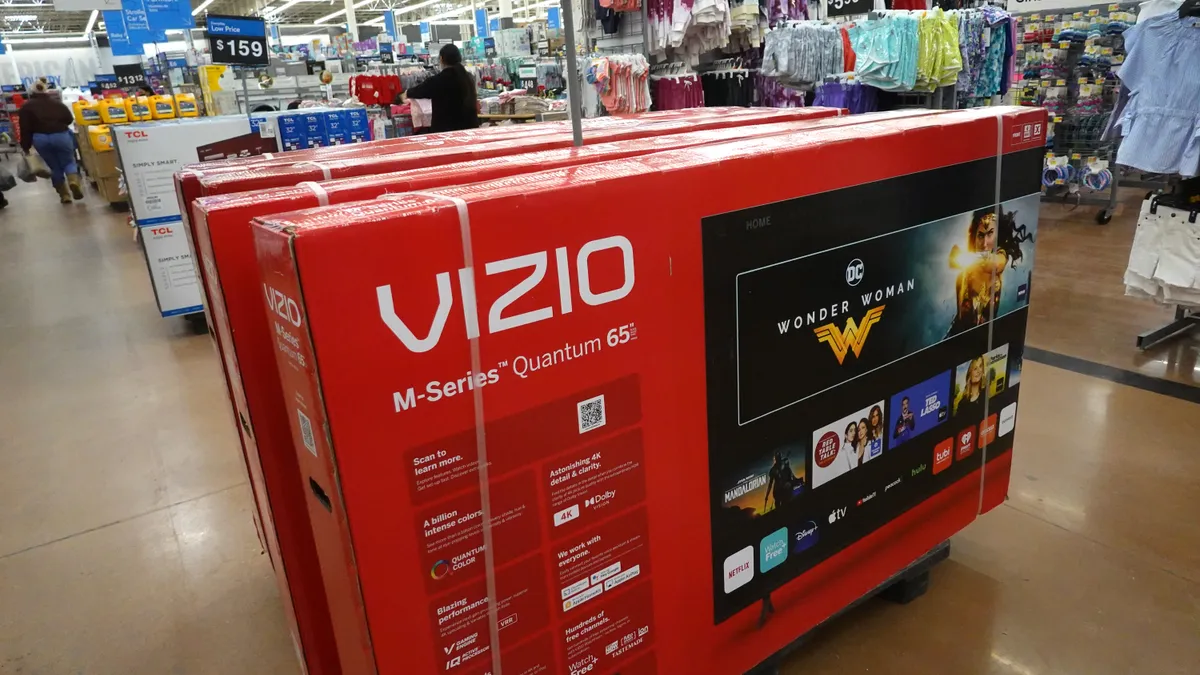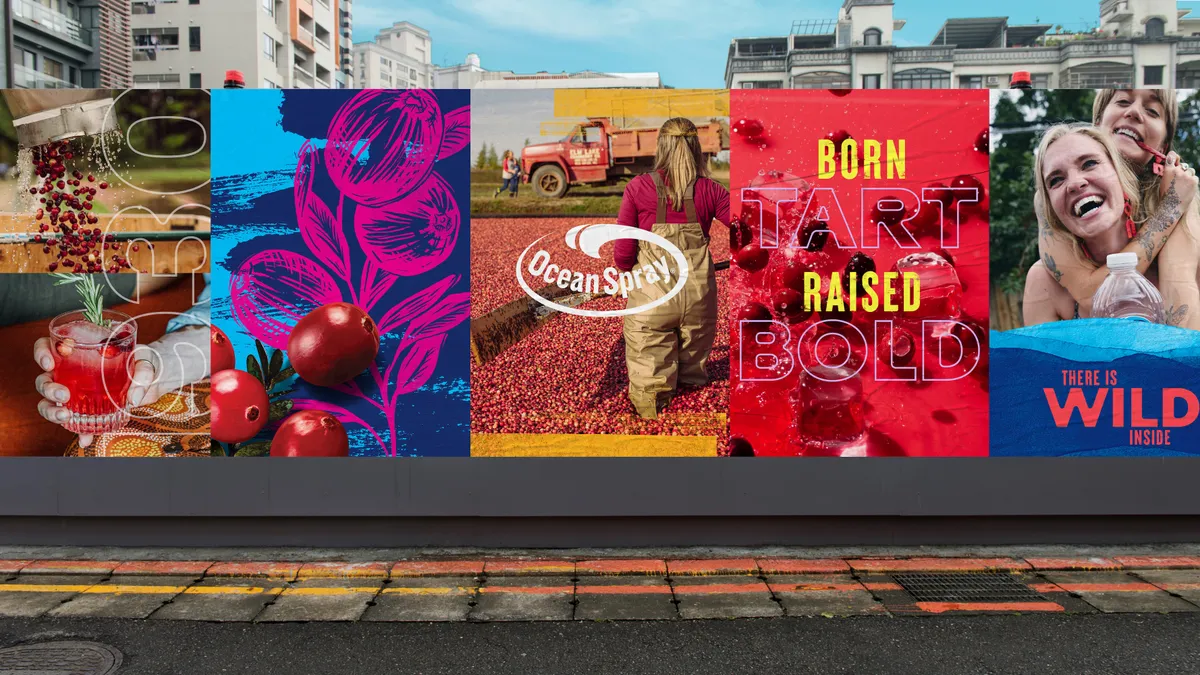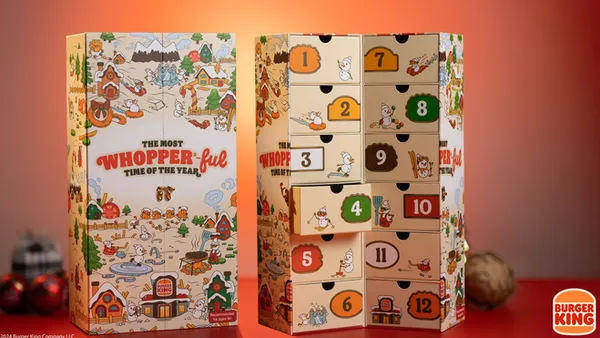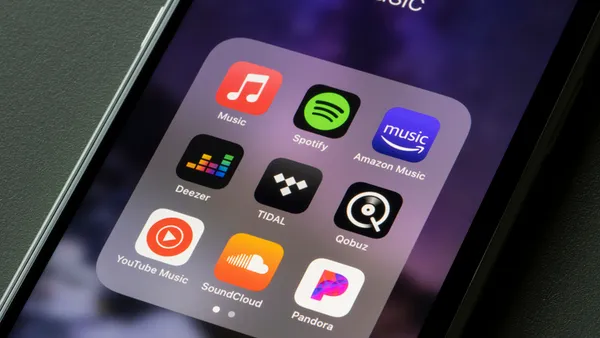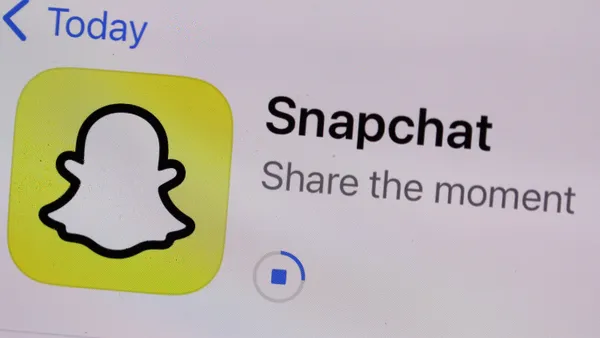Brief:
- Burger King tested a program to deliver food to motorists stuck in the most congested parts of Mexico City, and is looking to expand the service to crowded parts of Los Angeles, São Paulo and Shanghai, Adweek reported. The "Traffic Jam Whopper" service let drivers order food from the chain's mobile app and get it delivered to their car by motorcycle.
- The campaign boosted delivery orders by 63% in the first week of the test, and led to a 44-fold surge in Burger King app downloads. The burger chain promoted the service with ads on digital platforms like Waze, the social navigation app owned by Google, and with digital outdoor ads.
- Rather that focus on one area, the campaign shifted locations depending on where real-time traffic data showed the worst congestion. Burger King delivered food from restaurant locations within three kilometers of the driver. The fast food giant worked with agency We Believers on the stunt.
Insight:
Burger King's "Traffic Jam Whopper" test foretells of the possibility that brands will expand their in-car commerce efforts to include the physical delivery of goods to drivers during their commute. That adds a whole new dimension to marketing to a captive audience that represents a $230 billion opportunity for brands.
While it's too early to tell whether Burger King's delivery service to drivers stuck in traffic can become a sustainable revenue driver, the test does show a unique combination of mobile technologies, including location tracking, geotargeting and dynamic media placements.
Burger King isn't alone among fast food chains that are experimenting with new ways to reach smartphone users while they drive. McDonald's last year racked up 6.4 million mobile impressions by tying together out-of-home (OOH) billboards and in-app advertising on Waze to offer special promotions to drivers in Southern California. The campaign relied on billboards equipped with geofencing technology to detect when Waze users had stopped nearby.
Burger King has been active with its mobile-based campaigns in a variety of regions worldwide. In Brazil, the burger chain offered its app users a free Whopper for virtually setting fire to the ads of its rivals. The app used augmented reality (AR) to overlay digital images of a blazing inferno that burns away competitors' ads to reveal a mobile coupon for a free Whopper sandwich from the chain's nearest location. In the U.S., Burger King boosted downloads of its mobile app by 1.5 million with its "Whopper Detour" stunt that used geofencing and mobile push notifications to offer 1-cent burgers to smartphone users who were near rival McDonald's locations, demonstrating the marketing power of creative mobile technologies.


